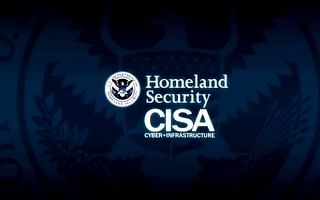Rhett Rowe is a seasoned expert in cybersecurity, boasting over 15 years of professional experience in the industry. He has collaborated with numerous Fortune 500 companies, aiding them in fortifying their digital infrastructures. Rhett is a Certified Ethical Hacker (CEH) and has earned his Master's degree in Information Security from Stanford University.
When it comes to personal data protection, the responsibility lies with both individuals and organizations. In today's digital age, where data breaches and cyber threats are on the rise, it's crucial for everyone to play their part in safeguarding personal information. In this answer, I'll explain the shared responsibility between individuals and organizations and provide some practical steps you can take to ensure the safety of your personal data.
Individual Responsibility:
As an individual, you have a vital role in protecting your personal data. Here are some key steps you can take:
Key Steps for Personal Data Protection
| Step 🚶♂️ | Action 🎬 | Benefit 🎁 | Tools/Resources 🛠️ |
|---|---|---|---|
| 1 | Use strong passwords | Prevents unauthorized access | Password managers (e.g., LastPass, Dashlane) |
| 2 | Enable two-factor authentication | Adds an extra layer of security | Authenticator apps (e.g., Google Authenticator, Authy) |
| 3 | Regularly update software | Fixes security vulnerabilities | Automatic updates, Patch management software |
| 4 | Avoid phishing scams | Protects against identity theft | Email filters, Security awareness training |
| 5 | Encrypt sensitive data | Keeps data private even if intercepted | Encryption tools (e.g., VeraCrypt, BitLocker) |
| 6 | Use a VPN | Hides your IP address and encrypts your internet connection | VPN services (e.g., NordVPN, ExpressVPN) |
| 7 | Regularly backup data | Prevents data loss in case of a cyber attack | Cloud backup services (e.g., Google Drive, Dropbox) |
1. Strong Passwords: Create unique, strong passwords for all your online accounts. Avoid using common phrases or easily guessable information. Consider using a password manager to securely store and generate complex passwords.
2. Two-Factor Authentication (2FA): Enable 2FA whenever possible. This adds an extra layer of security by requiring a second form of verification, such as a fingerprint or a one-time code sent to your mobile device.
3. Phishing Awareness: Be cautious of suspicious emails, messages, or phone calls asking for personal information. Phishing attacks often trick individuals into revealing sensitive data. Verify the legitimacy of requests before sharing any personal information.
4. Regular Software Updates: Keep your devices and applications up to date with the latest security patches. Software updates often include important security fixes that help protect against known vulnerabilities.
5. Public Wi-Fi: Be cautious when using public Wi-Fi networks. Avoid accessing sensitive information or making online transactions on unsecured networks. Consider using a virtual private network (VPN) for added security.
Organizational Responsibility:
Organizations that collect and process personal data also have a responsibility to ensure its safety. Here are some measures organizations should take:
Cybersecurity Measures for Organizations
| Measure 🛡️ | Purpose 🎯 | Tools 🧰 | Benefits 📈 |
|---|---|---|---|
| Data Encryption | To protect sensitive data from unauthorized access | SSL, TLS, VPN | Prevents data breaches, ensures privacy 🔒 |
| Firewalls | To block unauthorized access to networks | Cisco ASA, Fortinet, Palo Alto | Enhances network security, prevents cyber attacks 🚫 |
| Antivirus Software | To detect and remove malicious software | Norton, McAfee, Avast | Protects from malware, spyware, ransomware 🛡️ |
| Two-Factor Authentication | To add an extra layer of security during login | Google Authenticator, SMS codes | Reduces risk of unauthorized access, enhances account security 🔑 |
| Regular Backups | To prevent data loss in case of a cyber attack | Cloud storage, External hard drives | Ensures data availability, aids in disaster recovery 🔄 |
| Penetration Testing | To identify vulnerabilities in the system | Metasploit, Wireshark, Nessus | Helps in early detection of vulnerabilities, improves system security 🎯 |
1. Data Protection Policies: Establish clear policies and procedures for handling personal data. This includes defining who has access to the data, how it is stored, and how long it is retained.
2. Employee Training: Provide regular training and awareness programs to employees on data protection best practices. This helps ensure that everyone understands their responsibilities and knows how to handle personal data securely.
3. Secure Infrastructure: Implement robust network security measures, such as firewalls, intrusion detection systems, and encryption protocols. Regularly assess and update these security measures to address emerging threats.
4. Penetration Testing: Conduct regular penetration testing to identify vulnerabilities in your systems and applications. This proactive approach helps identify potential weaknesses before they can be exploited by attackers.
5. Compliance with Regulations: Stay up to date with relevant data protection regulations, such as the General Data Protection Regulation (GDPR). Ensure that your organization complies with these regulations and takes appropriate measures to protect personal data.
By following these steps, both individuals and organizations can contribute to the safekeeping of personal data. Remember, data protection is an ongoing process, and staying informed about the latest threats and best practices is crucial. Together, we can create a safer digital world for everyone.















